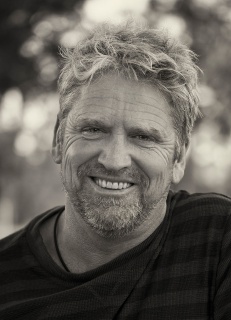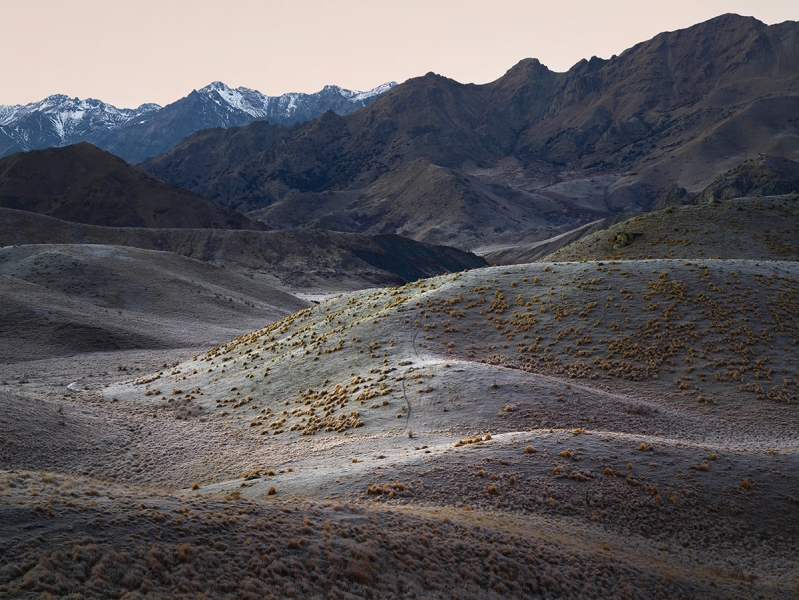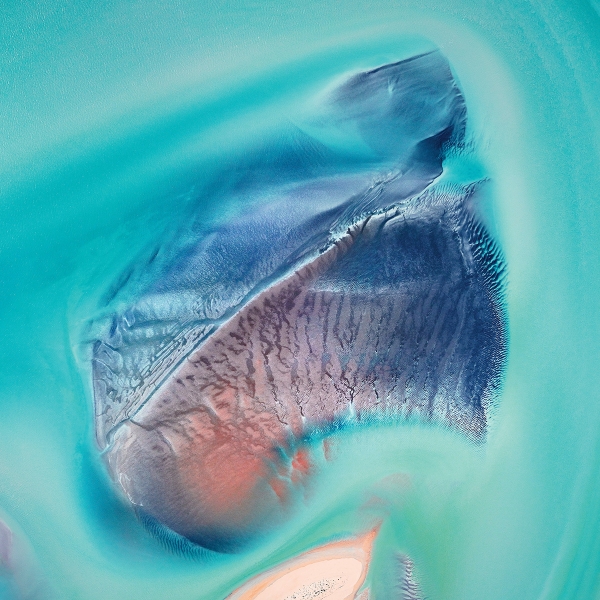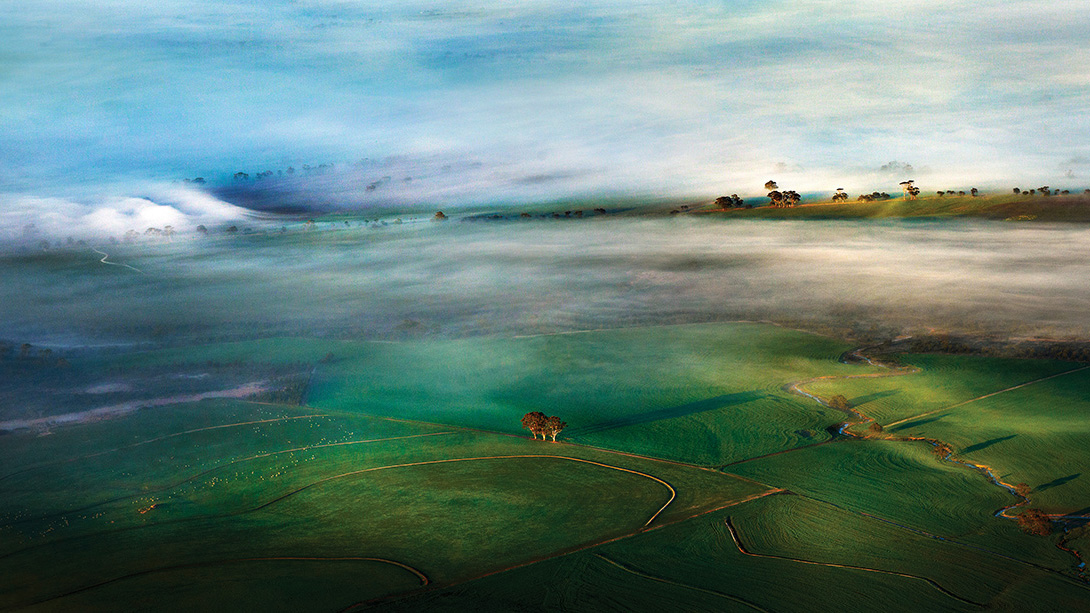Why Tony Hewitt’s photography business thrives on diversification
Photographer Tony Hewitt discusses diversifying your business and leaving room for creativity with each client
• February 2019 issue
"It’s fair to say that I’m not someone who likes to sit still.”
Anyone who’s met Tony Hewitt wouldn’t argue that. An Australian Institute of Professional Photography Grand Master of Photography, Hewitt is former Australian Photographer of the Year with a resume full of accolades. The Perth, Australia-based photographer started out in weddings, covering about 1,000 of them before evolving more into portrait work, then commercial photography, then fine art, landscape, and aerial images. His current mix has him traveling the globe for assignments, teaching engagements, coaching, and keynote speaking, with projects ranging from an aerial documentation of the coastline of Australia to a series of workshops in Ethiopia.

Tony Hewitt
The case for diversification
In a field where it’s easy—and sometimes desirable—to get pigeonholed into a narrow specialty, Hewitt has defied pressure to limit himself professionally.
“In my early years photographing weddings, I never understood why other wedding photographers operated within certain confines,” he says. “They seemed to be leaving so many opportunities behind. I always operated with the 90/10 rule: 90 percent of the job was what the client wanted, and then 10 percent was something else that I wanted to explore artistically.”
Those 10-percent images ultimately opened doors as clients appreciated what he was able to produce outside the confines of the must-have shot list. As a result, wedding clients turned into portrait clients, who turned into commercial clients, and images from those jobs may ultimately lead to fine art work. “That progression got me thinking,” says Hewitt. “What if I applied that same principle in a strategic way to other projects?”
For example, Hewitt landed a commercial project documenting the construction of a building. While on the scene, he made artistic photographs of the architecture. Then he approached the development company to offer them large architectural images as wall art for their office. From there, he could pivot to doing executive portraits for the boardroom and other related assignments. So what began as a straightforward commercial assignment at a certain number of hours grew into a multifaceted project with several applications and revenue streams—all from showing the client how his artistic vision could satisfy multiple needs.
“I want to be seen as someone who can photograph what I see, even if that was beyond the scope of the job,” says Hewitt. “And that leads to a lot of opportunities.”

Getting out of a rut
Many photographers specialize very intentionally. Others find themselves falling into a rut, bound to a track they didn’t necessarily choose, and limited in the range of work they can effectively sell. Hewitt says it’s up to photographers to get out of such ruts by understanding their motivation. “We need to understand who we are as people before we understand who we are as photographers,” he says. “Then we can choose our path more effectively.”
There’s so much in the world to photograph, Hewitt points out, and it’s up to the photographer to capture images in ways that people can relate to. “Take chaos, put a frame around it, and tell a story,” he says. “Whether it’s a wedding or an aerial photography shoot, there is so much going on around us. It’s our job to simplify it in a way that people can understand it.”

To do that, photographers must first understand who they are and what they represent. The purpose is important. Why do you photograph what you photograph? What is it about your subject that interests you? “Before you learn all the techniques and build your skillset, it’s important to understand the why,” says Hewitt. “When photographers get stuck in a rut, it’s because their purpose hasn’t evolved. Without a purpose, it’s hard to motivate yourself to change. But when you have a purpose, you find the time, you find the energy, and you learn the skills.”
Finding purpose starts with reminding yourself why you captured each image. What did you connect with? Why did you push the button at that particular moment?
Applying technique to purpose
When you understand your why, both as a professional and for each specific image, then that understanding can filter through your work, from capture through post-processing. Hewitt urges photographers to think, How do I express what I connected with when I captured this image?
Was it texture? Then what can you do in processing to bring out the texture in the image?
Was it color? Then how do you bring out that color using curves, saturation, or other tools to strengthen the narrative?

Was it structure? Then how can you crop or edit the composition to focus on the lines that grabbed your attention in that scene?
Was it an emotional component? Then how do you adjust contrast to make the scene harder or softer, to add depth and highlight certain elements?
“All of the decisions in post-production should be anchored in the emotional resonance that you felt when you pushed the trigger,” says Hewitt. “Technique should always be married to message.”
This follows the idea of looking for the invisible in every image, and then bringing that out. For example, there’s no “love pixel,” says Hewitt, but you can create a sense of love in an image by the way you portray the elements through posing, expression, body language, contrast, composition, and how you enhance everything in post production.
Expressing true connection
The difference between the casual photographer and a professional photographer is the ability to express the inherent nature of something, explains Hewitt. Real photography is about connection.

In portraiture, for example, a lot of people can take a pretty picture of your family on the beach, but what is most important to you? Is it the family, the beach, or this moment you want to remember? “I would suggest that it’s something more,” says Hewitt. “For children growing up and looking at the image, it reminds them of safety, of being part of something, of love—not just what they looked like at a particular age.”
If you explain that connection to a client, it usually resonates, says Hewitt. People need to be reminded that family portraits, portraits of their children, are far more than a remembrance of what people looked like at a certain age. Rather, they are a reminder of something that’s fleeting, and as a photographer you have the power to freeze it.
“That’s powerful because so many things in this life are transient,” says Hewitt. “But our job is not just to freeze time; it’s to freeze relevance, to bring purpose. That’s the invisible you should be connecting with. That’s what will take your work to the next level as an artist and solidify your value to your clients.”
RELATED: A gallery of Tony Hewitt's work
Jeff Kent is editor-at-large of Professional Photographer.


 View Gallery
View Gallery


